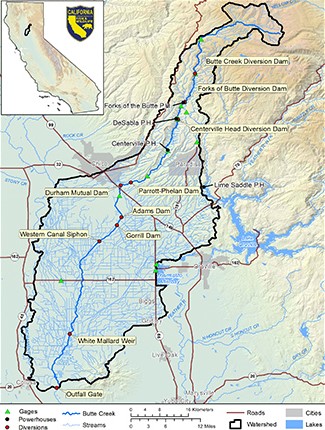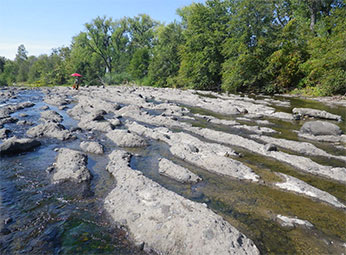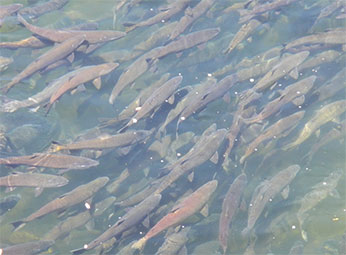 (click to enlarge)
(click to enlarge)
 Exposed bedrock formation in Butte Creek.
Exposed bedrock formation in Butte Creek.
 Spring-run Chinook salmon in Butte Creek.
Spring-run Chinook salmon in Butte Creek.
Butte Creek has the largest self-sustaining, naturally spawning, wild population of spring-run Chinook salmon (SRCS) in the Central Valley. Every year, hundreds to thousands of fish migrate up the creek to summer holding pools in the upper watershed where they spawn starting in September. However, migrating adults are known to be delayed and ultimately become stranded in a shallow pool downstream of a complex area of streambed composed of exposed bedrock. The exact causes that impede upstream passage are unknown, although decreasing flows, elevated water temperature, and difficulty passing exposed bedrock are factors that may hinder migration.
The IFP worked with U.S. Fish and Wildlife Service to complete a passage study in the valley section of lower Butte Creek. The study reach extends from Parrott-Phelan Diversion Dam downstream to Western Canal Siphon. Two-dimensional models were completed at multiple locations, including the exposed bedrock site, to analyze passage conditions for migrating adults based on water depth, width, velocity, and stream gradient. The predictive model results were combined with data from a flow stage and water temperature monitoring station located below the bedrock site and counts of fish passing from a monitoring station above the bedrock site. The IFP will use the study results to develop a technical report and evaluate flow regimes favorable to upstream migration under different water year types.
Resources